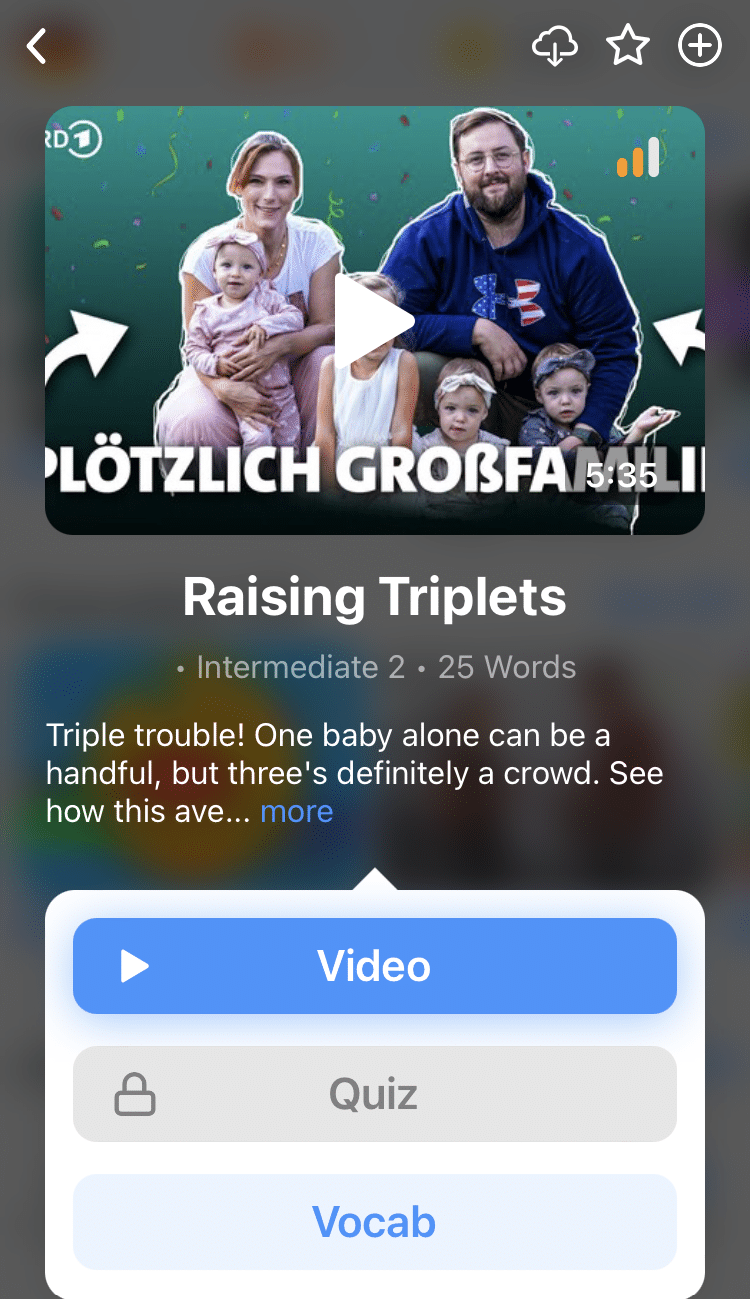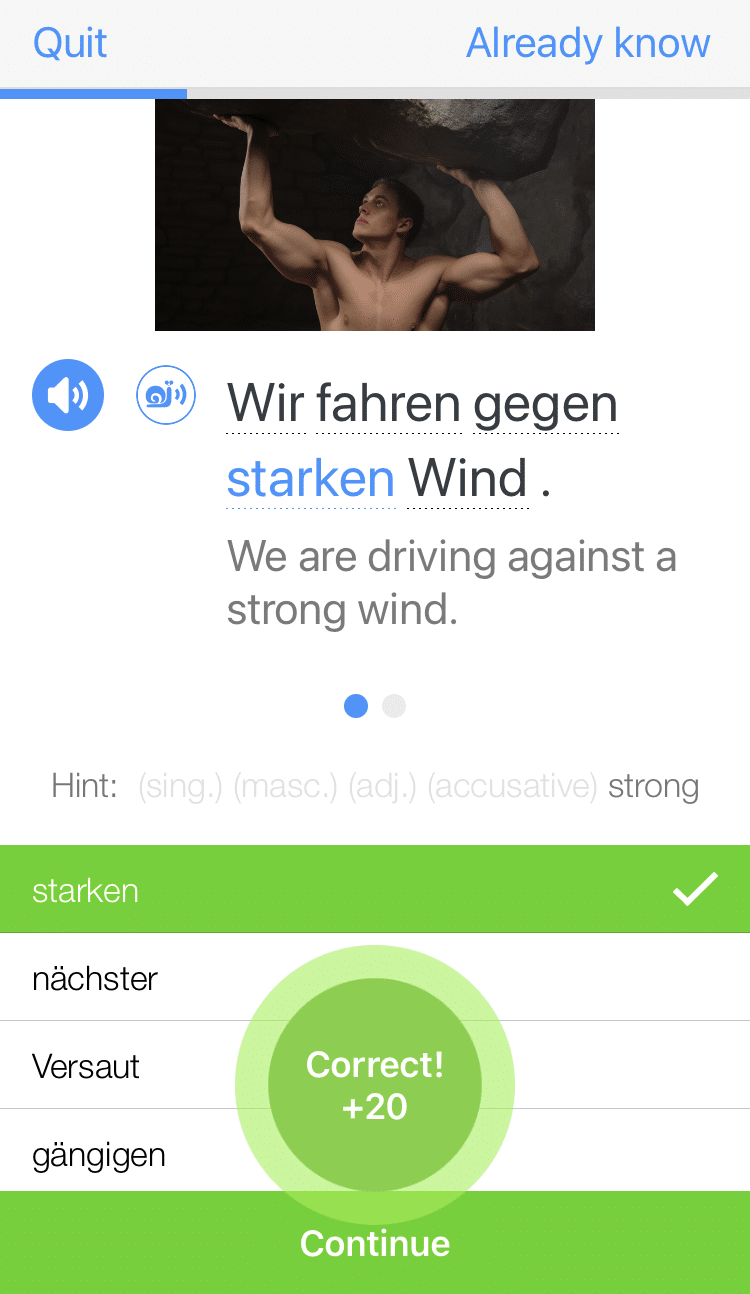
Counting in German: Numbers from 1 to 100 and Beyond
Do you know how to count in German?
Learning the numbers in German is one way to get started on the way to counting efficiently, but putting it into practice is a guaranteed way to form a German counting habit.
We’ll help you with counting in German, plus some fun ways to commit the sequences to memory!
Contents
- Counting from 1 to 20
- Counting from 21 to 99
- Counting to 100, 1000, 10000, 1 Million and Beyond
- Neat Ways You Can Practice Numbers and Counting
- And One More Thing...
Download: This blog post is available as a convenient and portable PDF that you can take anywhere. Click here to get a copy. (Download)
Counting from 1 to 20
- eins — 1
- zwei — 2
- drei — 3
- vier — 4
- fünf — 5
- sechs — 6
- sieben — 7
- acht — 8
- neun — 9
- zehn — 10
- elf — 11
- zwölf — 12
- dreizehn — 13
- vierzehn — 14
- fünfzehn — 15
- sechzehn — 16
- siebzehn — 17
- achtzehn — 18
- neunzehn — 19
- zwanzig — 20
Counting from 21 to 99
Once you get past 20, the German numbers start sounding strange compared to English. The number order is backwards with higher numbers, which you will see below.
Looked at literally, 23 is “three and twenty” in German, so you put the ones digit number first, include an und (and) and say the word “twenty” in German. This process stays consistent all the way up to 99.
If we count by tens, the numbers are pretty straightforward.
Once you work with more specific numbers, you’ll see how the second digit is stated first in German:
- dreiunddreißig — 33
- einundfünfzig — 51
- siebenundsiebzig — 77
- zweiundachtzig — 82
- neunundneunzig — 99
Important: Notice how the teens are slightly different from the the way you’d say numbers like 20 and 30. Zehn (ten) is placed at the end of each word for the teens, while –zig or –ßig (umpteen) is put at the end for higher numbers.
Take a moment to randomly pick out numbers to see if you can create the German version. Since we’re learning how to count, we recommend starting with sets of 10, so working through a set like 50 to 59 is a great way to get these increments into your head.
- fünfzig — 50
- einundfünfzig — 51
- zweiundfünfzig — 52
- dreiundfünfzig — 53
- vierundfünfzig — 54
- fünfundfünfzig — 55
- sechsundfünfzig — 56
- siebenundfünfzig — 57
- achtundfünfzig — 58
- neunundfünfzig — 59
Counting to 100, 1000, 10000, 1 Million and Beyond
Once you reach the hundreds, it becomes a little more logical in number sequence.
- (ein)hundert — 100
- (ein)tausend — 1,000
- zehntausend — 10,000
- zweihunderttausend — 200,000
- eine Million — 1,000,000
- eine Milliarde — 1,000,000,000
Keep in mind, however, that when counting in this high range of numbers, you still use the same structure if you have numbers like 22 or 45 tagged onto the end of the 1,000 or 10,000.
For example:
- tausendzweihundertzwanzig — 1,220
- tausendzweihunderteinundzwanzig — 1,221
- tausendzweihundertzweiundzwanzig — 1,222
- tausendzweihundertdreiundzwanzig — 1,223
To help you out with the number structure in German, the literal translation for the first one would be “one thousand two hundred twenty.”
As you can see, the sequence of numbers is fairly similar to the way in which you would say it in English, except the words are smashed together and you have to remember to follow the rules for numbers between 20 and 99.
So, for 9,999, it would be neuntausendneunhundertneunundneunzig, or more literally, nine thousand nine hundred nine and ninety.
Neat Ways You Can Practice Numbers and Counting
Reading through a list of numbers is a necessity when getting started. But you’ll never commit those numbers to memory or learn to count in German if you don’t practice on a daily basis.
Here’s a fun video from Easy German to review the numbers from 1 to 100 to help you remember them:
You can also make multimedia flashcards—with audio included—on FluentU.
FluentU takes authentic videos—like music videos, movie trailers, news and inspiring talks—and turns them into personalized language learning lessons.
You can try FluentU for free for 2 weeks. Check out the website or download the iOS app or Android app.
P.S. Click here to take advantage of our current sale! (Expires at the end of this month.)
For more practice, here are some other fun ways to bring counting into your schedule:
- Count your steps. Start counting the steps (in German) every time you go up or down a set of stairs. This will become habit and ingrain the counting process into your head without even knowing it.
- Listen to counting videos. If you prefer listening to the numbers, here’s a video that counts from one to ten, and here’s another with numbers from 11 to 100.
- Bring German numbers and counting into your cooking. If you’re one of those folks who likes to cook for yourself at home, consider printing out recipes in German. Even if you’re using a recipe in English, several numbers are scattered throughout the ingredients and procedures, so when you need to count out how many cups are being used in a recipe, do it in German.
- Put it to a tune. Sometimes it’s much easier to remember the sequence of numbers when a melody is put behind it. Therefore, check out videos like this one to get a song stuck in your head.
- Bring your German counting to the gym. Whether lifting weights or doing crunches, counting your reps and sets comes into play for improving yourself physically. This is the perfect time to run through your German counting in your head or out loud.
- Call out German numbers when flipping through channels. Watching TV doesn’t always have to be mind numbing. In fact, many people have thousands of channels, so this gives you a chance to look at a number like 653 and say it out loud in German.
- Try online games, puzzles and activities. From matching games to quizzes and memory activities, the Internet is packed with opportunities for you to practice and test out your German numbers knowledge.
Chances are, you’ll rarely have to count up to one million, but if you’re doing business and counting money, or pulling a Ron Burgundy to impress someone with how many curls you can do, counting in the thousands is not an unheard of practice.
Your best bet is to stick with some of the methods for practicing counting and numbers, so bring German into your workouts, count the number of steps on a staircase and play around with German counting exercises online.
After a while, counting in German will become second nature, and you’ll be counting German sheep as you go to bed!
Download: This blog post is available as a convenient and portable PDF that you can take anywhere. Click here to get a copy. (Download)
And One More Thing...
Want to know the key to learning German effectively?
It's using the right content and tools, like FluentU has to offer! Browse hundreds of videos, take endless quizzes and master the German language faster than you've ever imagine!
Watching a fun video, but having trouble understanding it? FluentU brings native videos within reach with interactive subtitles.
You can tap on any word to look it up instantly. Every definition has examples that have been written to help you understand how the word is used. If you see an interesting word you don't know, you can add it to a vocabulary list.
And FluentU isn't just for watching videos. It's a complete platform for learning. It's designed to effectively teach you all the vocabulary from any video. Swipe left or right to see more examples of the word you're on.
The best part is that FluentU keeps track of the vocabulary that you're learning, and gives you extra practice with difficult words. It'll even remind you when it’s time to review what you’ve learned.
Start using the FluentU website on your computer or tablet or, better yet, download the FluentU app from the iTunes or Google Play store. Click here to take advantage of our current sale! (Expires at the end of this month.)







